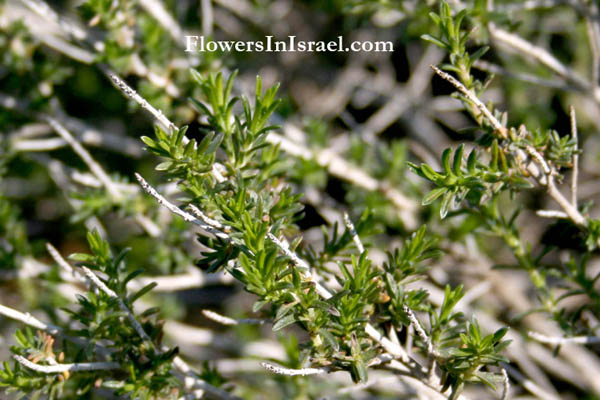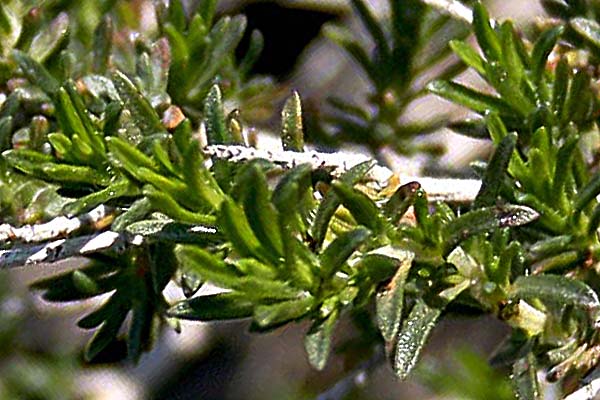Conehead thyme, Persian-hyssop, Spanish oregano, Israeli Thyme,
Hebrew: קורנית מקורקפת, Arabic: زعتر برّي
| Scientific name: | Coridothymus capitatus (L.) Rchb. | |
| Synonym name: | Thymbra capitata (L.) Cav., Satureja capitata L. | |
| Common name: | Conehead thyme, Persian-hyssop, Spanish oregano, Israeli Thyme | |
| Hebrew name: | קורנית מקורקפת | |
| Arabic name: | زعتر برّي | |
| Plant Family: | Labiatae / Lamiaceae, שפתניים |

|
| Life form: | Chamaephyte, semi-shrub | |
| Stems: | 20-50 cm tall; woody, densely branched with erect or ascending stems | |
| Leaves: | Opposite, entire | |
| Flowers: | Pink, purple | |
| Fruits / pods: | Fruit composed of four nutlets | |
| Flowering Period: | May, June, July, August, September, October | |
| Habitat: | Batha, Phrygana | |
| Distribution: | Mediterranean Woodlands and Shrublands, Semi-steppe shrublands, Montane vegetation of Mt. Hermon | |
| Chorotype: | Mediterrabean | |
| Summer shedding: | Perennating |

Derivation of the botanical name: Coridothymus, Greek, koris, koridos "a species of Hypericum, a bug"; and thyme capitatus, caput, head; with a head. Thymbra, an ancient Latin name, thymbra, thymbrae, in Pliny for a savoury, thymelike plant; the herb savory. Satureja, satureia ;there is a common origin with Hebrew zaʾatar [זעתר], Arabic az-za'tar [الزعتر], and Turkish sater.
|